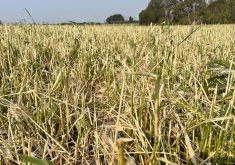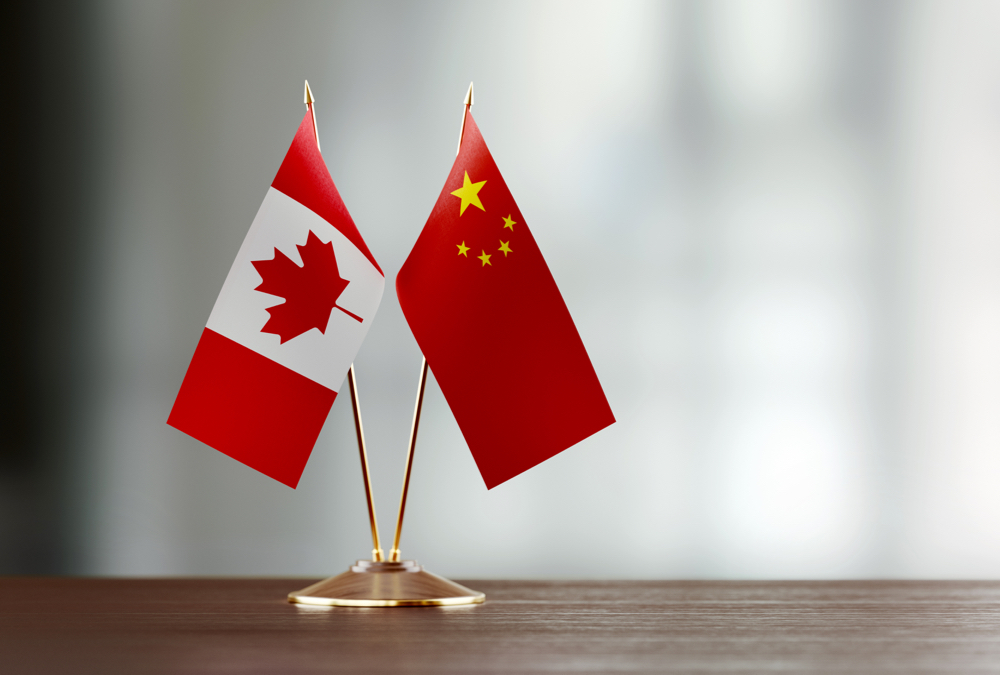Just one simple fact helps you understand the Canadian potato industry, and that’s just how big our crop is relative to domestic consumption.
We Canucks consume just under 26 pounds of potatoes a year, but we produce about 10.2 billion pounds a year — 310 pounds for every man, woman and child in the country.
As with most other Canadian agricultural commodities, that means a whole lot has to leave the country. A few pounds dribble out here and there as raw table potatoes or other specialty products like potato chips, but the 600-pound gorilla in the industry is the frozen french-fry market. Nearly 60 per cent of the potatoes produced in Canada are steam-peeled, blanched, par-fried, flash frozen and packaged before finding their way to retail freezers and fast-food joints, almost all of them outside the country, says Ken MacIsaac, United Potato Growers of Canada general manager.
Read Also

Producers aren’t panicking over tariffs and trade threats
The influence of tariff and trade uncertainity on farm business decisions.
“Canada is as reliant on exports today as ever, and mainly we export to the U.S., where we backfill that market as they move their own crop offshore,” he says.
The tale of how that market has first waxed, then waned, and now appears poised to grow again is an interesting microcosm of how two distinct but intertwined economies function.
Free trade and a low loonie
The latest boom run for Canada’s french-fry industry has its roots in the late 1980s, with the inking of the original Canada-U.S. Free Trade Agreement, which all but eliminated tariffs between Canada and the U.S.
A few years later the Canadian dollar began to decline precipitously, making Canadian fries cost-competitive with their U.S. counterparts. By the mid-’90s the dollar was trading between 70 and 75 cents U.S. and in 2002 reached an all-time low of 62 cents. But rising oil prices took the loonie to an all- time high of $1.10 in 2007, and it traded somewhere between 95 cents and $1.05 until recently.
When our dollar was in the weeds, Canadian exports were extremely competitive. When our dollar was high enough to make NDP leader Thomas Mulcair mutter darkly about Dutch disease, they were pretty hard up. Processed potato products were no exception and the high dollar has handed the industry more than a few lumps. Acreage and exports to the U.S. have fallen.
Manitoba’s potato industry has been especially susceptible to the ups and downs. In 1988, the year the first free trade agreement took effect, the province produced just 42,500 acres. By 1994, with a 70-cent dollar, growers planted 54,500 acres, beginning a steady climb to an all-time high of 101,500 acres in 2003. But as the dollar began its rapid oil-fuelled ascent, acreage began to decline and in 2013 just 70,000 acres went into the ground, the lowest figure posted since 1996. This past season was even worse, with only 63,348 acres of spuds going into the ground.
It’s meant a few years of tough sledding for growers, says Keystone Potato Producers Association general manager Dan Sawatzky.
“I think it’s a fair assessment to say we have borne a lot of the pain here in Manitoba,” Sawatzky told Potato Guide. “Manitoba has definitely been hit the hardest in the past two years.”
Signs of recovery?
There may be early signs of hope. The U.S. recovery has taken hold and consumers have begun to spend again — including buying fries at quick-serve restaurants. Oil prices have plummeted, dragging down the Canadian dollar. Will this mean new opportunities for the Canadian french fry industry?
“I would expect it would,” says Sawatzky. “It’s definitely going to be a bit of a fight for market share, and with the dollar at 85 cents, we’re more competitive.”

While these macro trends are running in favour of the Canadian french-fry sector, there still remain other developments that justify keeping a close eye on. For one thing, U.S. processors have finally succeeded in sparking interest in fries in Asia — but now they’re running into trouble getting the product offshore in time to meet growing demand.
“There’s been a bit of an issue with backlogs at the ports in Washington, which is preventing the export of product out of the Columbia basin,” says MacIsaac of United Potato Growers.
That could see domestic U.S. production rerouted to their own markets, shutting Canadian fries out. There’s also a new transportation option emerging that could expedite this alternative, says Sawatzky.
“There’s a new organization called Railex that has a running rights agreement that lets them send 53-car-unit trains of frozen and refrigerated product from Washington state to New York,” he says. “That will open up a transportation channel that wasn’t there before.”
Sawatzky says KPPA and growers have been lobbying local processors to see if they can leverage the Winnipeg CentrePort logistics hub themselves to produce a Manitoba competitive advantage.
Offshore demand
MacIsaac says the growth of the Chinese market is particularly exciting, since those consumers have shown a real taste for North American-style fries, particularly from the varieties of potatoes Canadian and U.S. growers produce.
“China has definitely been the bright spot the past two or three quarters,” he says.
Sawatzky says Manitoba growers will continue to find efficiency where they can, essentially aiming to keep themselves in the game longer. He noted the province has seen very strong growth in potato yields.
“We have been increasing yields at a faster rate than any other jurisdiction in North America,” he says. “We’ve been seeing increases of eight cwt an acre and the industry average has been somewhere between three and five cwt an acre.”
He mainly credits that growth to growers who are really beginning to finely hone their irrigation management to local growing conditions.
Another key area of work will be funding research in all areas of potato production in the province, with particular attention to identifying new varieties that may work better for the local climate than the industry standard Russet Burbank variety.
“It is the most widely grown variety in North America, but it might not be the best suited to our local growing conditions,” he says. “Anything that would identify and promote the acceptance of better-suited varieties would be an advantage.”
This article was originally published in the 2015 Potato Guide
















